When it comes to building a balanced upper body, most gymgoers know their back and biceps matter.
The problem is, their training doesn’t reflect it.
They meticulously plan their chest and shoulder workouts, but when it’s time to train their back and bis, it’s a last-minute mash-up of rows, pulldowns, and curls using whichever equipment’s free.
Fall into this trap long enough, and you’ll start to see the consequences—hunched posture, unbalanced aesthetics, and stalled progress on your key lifts, to name a few.
A well-designed pull day workout fixes all of that.
But what is a pull day workout?
It’s a routine built around exercises that involve pulling weights off the floor or toward your torso. Done right, it’s one of the most efficient ways to train several major muscle groups—especially your back and biceps.
In this article, you’ll learn how to structure an effective pull day workout, which pull day exercises drive the most growth, and how to build a routine that delivers serious size and strength.
Key Takeaways
- Pull day workouts train the muscles used to pull things toward your body—primarily your back and biceps, though they may also train your glutes and hamstrings if you include deadlifts.
- Pull day workouts are typically part of either a “push pull legs” or “push pull legs upper lower” split, where each workout focuses on a specific movement pattern or area of the body.
- The best pull day workout routines include exercises like the deadlift, pull-up, dumbbell row, pullover, reverse fly, and preacher curl.
- They’re ideal for building a balanced physique, gaining strength that carries over to other key exercises, and training multiple muscle groups efficiently.
- To get the most out of your pull day workouts, train close to failure, eat plenty of calories and protein, track your training, and aim to get stronger over time.
What Is a Pull Day Workout Routine?
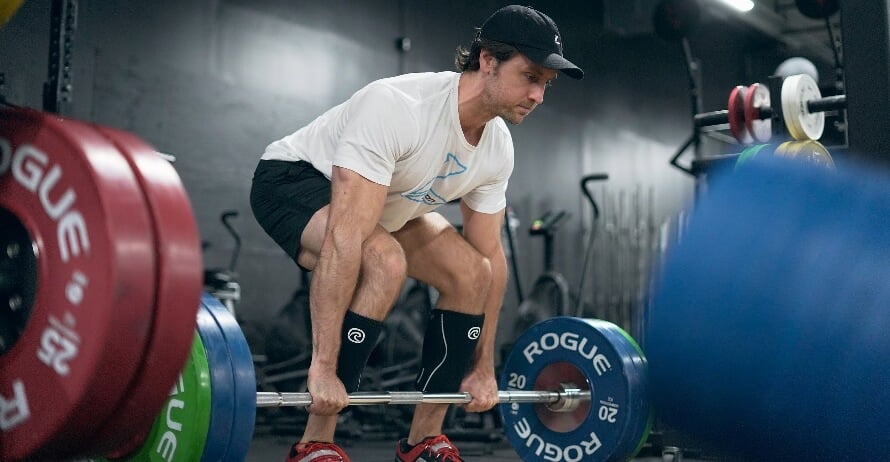
A pull day routine is a type of workout in which you train all the muscles involved in pulling things off the floor or toward your torso.
Pull day workouts are typically part of either a “push pull legs” or “push pull legs upper lower” split. These are programs that dedicate entire workouts to training a specific “movement” (e.g., pushing) or area of your body (e.g., your legs).
READ MORE: An Expert Guide to the Push Pull Legs Upper Lower (PPLUL) Split
Muscles Worked in a Pull Day Workout Routine
Pull day exercises train your . . .
- Latissimus dorsi (lats)
- Posterior deltoids (rear delts)
- Rhomboids
- Trapezius (traps)
- Infraspinatus
- Teres major and minor
- Erector spinae (lower back)
- Biceps brachii
Here’s how your pull day muscles look on your body :
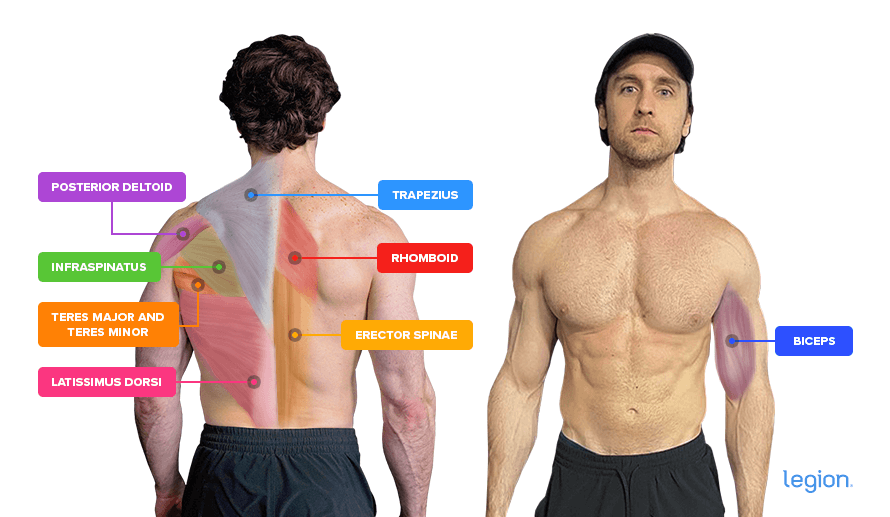
The Best Pull Day Workout for Mass & Strength
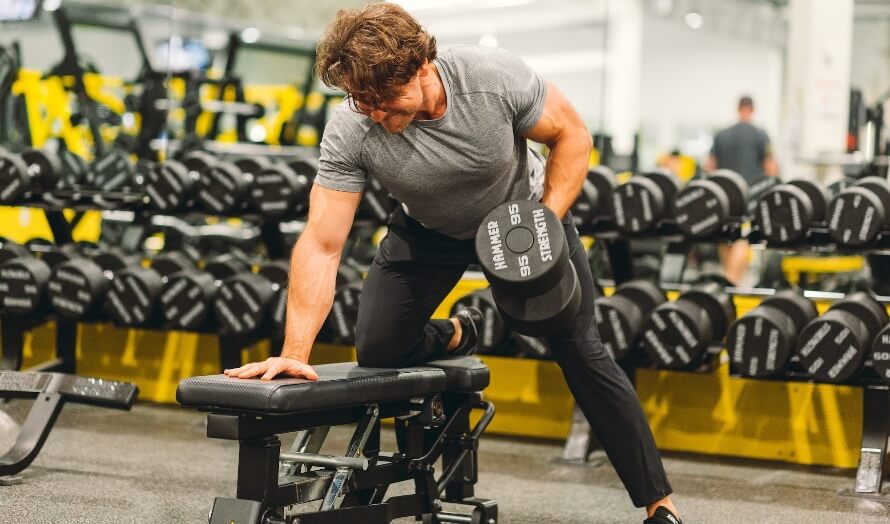
The following pull day workout routine is designed to help you pack on muscle and gain strength fast. It’s so effective because it trains all your pull muscles through long ranges of motion with exercises that allow you to lift heavy weights and make consistent progress.
That said, it’s highly demanding. To maximize your gains without burning out, do it once weekly for 8-to-10 weeks, deload, then replace it with a less taxing pull day workout for 8-to-10 weeks. Once you’re fully recovered, switch back to this routine to kickstart growth again:
Your Pull Day Exercise List
Now that you know what your pull day gym workout looks like, let’s take a closer look at why each exercise is so effective, how to perform it correctly, and which alternatives to use if you can’t—or don’t want to—do one of the movements above.
1. Deadlift
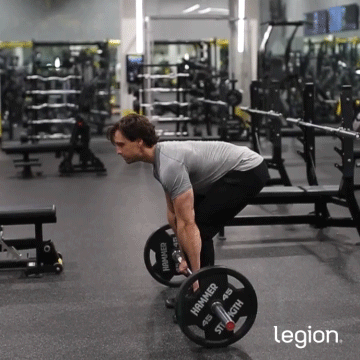
Most experts agree that the deadlift is the best pull day exercise for gaining mass and strength because it lets you handle heavier weights than any other exercise, trains every muscle involved in pulling something off the floor, and makes implementing progressive overload straightforward. That’s why every good pull day workout begins with the deadlift.
How To:
- Position your feet so they’re a bit less than shoulder-width apart with your toes pointed slightly out. Move a loaded barbell over your midfoot so it’s about an inch from your shins.
- Move down toward the bar by pushing your hips back and grip the bar just outside your shins.
- Take a deep breath of air into your belly, flatten your back by pushing your hips up slightly, and then drive your body upward and slightly back by pushing through your heels until you’re standing up straight.
- Reverse the movement and return to the starting position.
Alternatives:
- Trap-Bar Deadlift
- Sumo Deadlift
- Romanian Deadlift
2. Pull-up

The pull-up is one of the best upper-body pull exercises you can do. While it trains most back muscles, it’s particularly effective for developing your lats, which is important for creating the “V-taper” many people want. It also builds your biceps better than most other compound pull day exercises.
How to:
- Grab a pull-up bar slightly wider than shoulder-width apart with your palms facing away from you.
- Lift your feet so that you’re hanging with your arms straight.
- Pull your body up until your chin is above the bar.
- Once your chin passes the bar, lower yourself to the starting position in a reverse motion.
Alternatives:
- Chin-up
- Neutral-Grip Pull-up
- Lat Pulldown
3. One-Arm Dumbbell Row
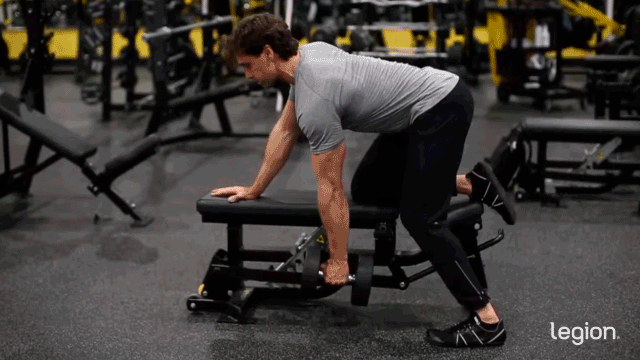
The one-arm dumbbell row is a valuable addition to a pull day workout routine because it trains each side of your back independently, which means it helps you build proportional back mass. It can also help you establish a stronger “mind-muscle connection” and may enhance athletic performance more than pull day exercises that train both sides of your body simultaneously.
How to:
- Hold a dumbbell in your right hand.
- Plant your left knee and arm firmly on a bench, your right foot on the floor a foot or two from the bench, and let your right arm hang straight down toward the floor).
- Keeping your back straight, pull the dumbbell upward until it touches your torso, and then return it to the starting position.
- Once you’ve completed the desired number of reps, repeat the process with your left arm.
Alternatives:
- Meadows Row
- Barbell Row
- Chest-Supported Dumbbell Row
4. Cable Pullover
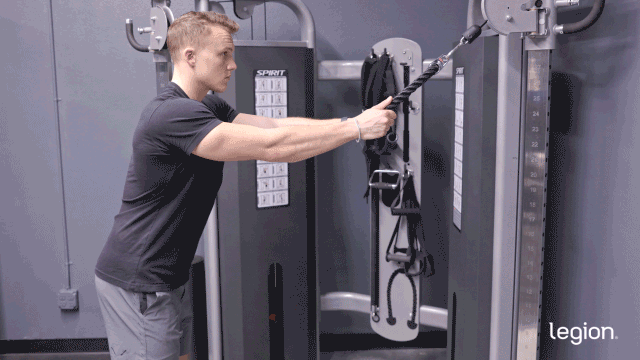
The cable pullover trains your lats without involving your biceps, which makes it a great way to train your back later in a pull day workout when your biceps are already tired. It also trains your lats in a fully stretched position and through a long range of motion, which can benefit muscle growth.
How to:
- Set the pulley to the highest position on a cable machine and attach the rope handle.
- Hold one end of the rope in each hand, and step away from the pulley until there’s tension in the cable.
- Position your feet shoulder-width apart, and lean forward until your body makes a 45-degree angle with the floor and your arms are nearly straight overhead.
- Keep a small bend in your elbows and pull the rope in an arc toward your feet until your hands are by your thighs or a little past them.
- Reverse the movement and return to the starting position.
Alternatives:
- Dumbbell Pullover
- Machine Pullover
- Close-Grip Lat Pulldown
5. Machine Reverse Fly
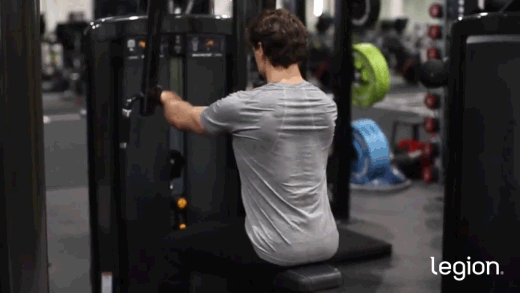
If you want a well-balanced upper back, you need to include an isolation exercise for the rear delts in your pull day workouts. Research shows that the machine reverse fly is highly effective for targeting the rear delts, making it an excellent exercise for the job.
How to:
- Sit facing the machine with your feet firmly planted and the handles at shoulder height.
- Grab the handles with your palms facing down and press your chest against the pad.
- With a slight bend in your elbows, pull the handles back in an arc until your arms are straight out to the sides or slightly behind your body.
- Reverse the movement and return to the starting position.
Alternatives:
- Dumbbell Rear Lateral Raise
- Barbell Rear Delt Row
- Face Pull
6. Preacher Curl
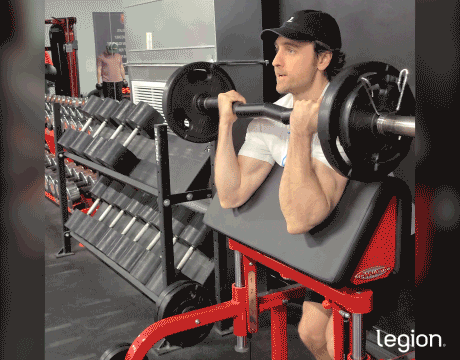
The preacher curl “locks” your upper arms in place, so you can’t use your back and hips to swing the weight up. That forces your biceps to do almost all the work. It also loads your biceps in a stretched position, which likely explains why research shows it’s one of the best exercises for building biceps size.
How to:
- Adjust a preacher curl station so that the top of the pad sits in your armpits while you’re sitting on the seat.
- Grab the bar with a shoulder-width grip and your palms facing up.
- Curl the weight to shoulder height, making sure to keep your elbows on the pad.
- Lower the bar and return to the starting position.
Alternatives:
- Barbell Curl
- Alternating Dumbbell Curl
- Hammer Curl
The Benefits of Pull Day Workout Routines
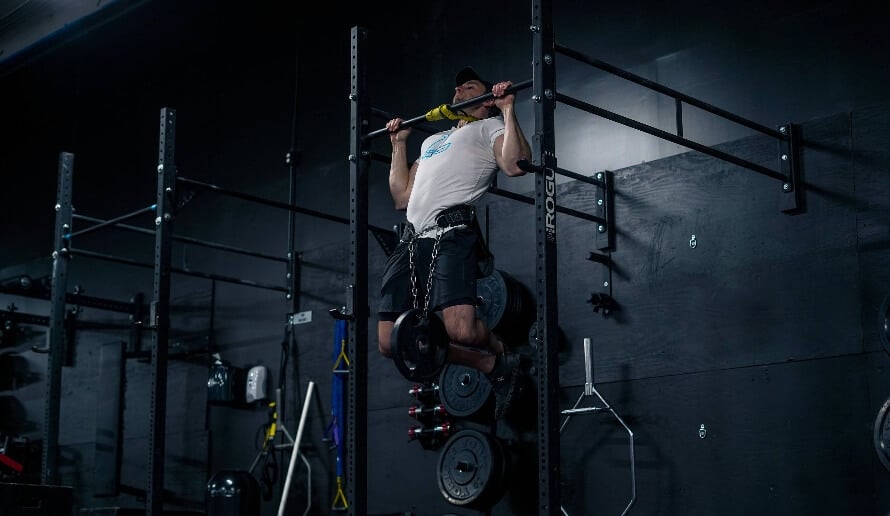
Balanced Muscle Development
Many weightlifters focus on training the muscles you can see in the mirror but neglect the muscles on the back of their body.
Over time, this can cause size and strength imbalances, which spoil your “aesthetics,” and may increase your risk of injury.
A well-structured pull day routine prevents this by ensuring you regularly train your pulling muscles, so they never lag too far behind your “pushing” muscles.
Improved Weightlifting Performance
A strong back is essential if you want to lift heavy weights—it prevents you from tipping forward in the squat, stops your spine from rounding in the deadlift, and creates a stable base during the bench press.
Following a good pull day workout routine helps you strengthen your back and, thus, helps boost your performance on other key exercises.
Highly Time-Efficient
While training splits that involve training a single muscle group per session can work, they aren’t the most time-smart way to train.
Doing at least one pull day workout weekly is much more efficient because it allows you to train your back, biceps, glutes, and hamstrings in a single session.
5 Tips for More Effective Pull Workouts
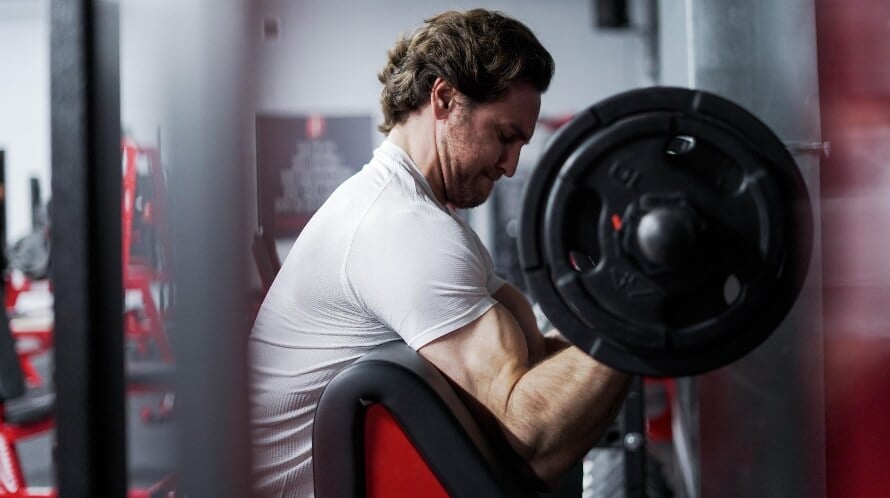
1. End every set 1-to-3 reps shy of muscle failure.
As I explain in my fitness books for men and women, to get the best possible results from your pull day workouts, you must take most of the sets to within a rep or two of failure.
Ask yourself at the end of each set, “If I had to, how many more reps could I have gotten with good form?” If the answer is more than two, increase the weight or reps to make your next set more challenging.
READ MORE: Does Training to Failure Help You Build More Muscle? What Science Says
2. Once you hit the top of your rep range for a set, move up in weight.
If your pull day workout calls for 4-to-6 reps of the deadlift and you get 6 reps for a set, add 10 pounds to your next set.
If you manage 3 or fewer reps with the new weight, reduce the weight by 5 pounds to ensure you stay in the 4-to-6 rep range.
Follow this pattern of trying to add reps or weight to every exercise in every workout.
READ MORE: Double Progression Guide: How to Use Double Progression to Gain Muscle and Strength
3. Eat enough calories and protein.
To maximize muscle and strength gain while following this pull day workout routine, maintain a daily calorie surplus of around 110% of your total daily energy expenditure (TDEE). In other words, eat around 10% more calories than your body burns daily.
You also need to eat enough protein to allow your leg muscles to recover, repair, and grow effectively. Aim to eat at least one gram of protein per pound of body weight per day.
For personalized advice about exactly how many calories to eat, how much of each macronutrient, and which foods you should consume to reach your fitness goals, take the Legion Diet Quiz.
4. Track your workouts.
Tracking your workouts keeps you focused, motivated, and moving forward. If you’re not writing things down, you’re basically guessing your way through every session—guessing how much weight to lift, how many reps to aim for, and whether you’re actually improving.
And that’s a recipe for spinning your wheels.
To keep it simple, use a notebook or the notes app on your phone. Log each exercise, the rep range, and how many reps you hit per set. For example:
Pull Day Workout 04/03/2025
Deadlift (4-to-6 reps)
- Set 1: 5 reps
- Set 2: 4 reps
- Set 3: 4 reps
Before each pull day workout (or any workout for that matter), check your previous numbers and aim to beat them—whether by adding a rep, increasing the weight, or improving your form.
You can also jot down how you felt, if anything hurt, or other notes that might explain your performance. These details help you train smarter over time.
3. Take the right supplements
These supplements can help optimize your pull day workout performance and gains:
- Protein powder: Protein powder provides your body with the nutrients needed to build muscle tissue and recover from workouts. If you want a clean and delicious protein powder, try Whey+or Casein+.
- Creatine: Creatine boosts muscle and strength gain, improves anaerobic endurance, and reduces muscle damage and soreness from your workouts. For a natural source of creatine that also includes two other ingredients to enhance muscle growth and improve recovery, try Recharge.
- Pre-workout: A high-quality pre-workout enhances energy, mood, and focus, increases strength and endurance, and reduces fatigue. For a top-tier pre-workout containing clinically effective doses of 6 science-backed ingredients, try Pulse with caffeine or without.
(If you’d like even more specific advice about which supplements you should take to reach your health and fitness goals, take the Legion Supplement Finder Quiz, and in less than a minute, you’ll know exactly what supplements are right for you. Click here to check it out.)
FAQ #1: Should I divide workouts by push and pull?
Yes—splitting your workouts into push and pull days is a smart way to build a balanced upper body. Push workouts hit your chest, shoulders, and triceps, while pull workouts target your back and biceps. To stay proportionate, though, make sure you’re training your lower body at least once a week, too.
READ MORE: The Best Push Day Workout Routine for Size & Strength
FAQ #2: Are pulling workouts only for the upper body?
Not always. If your pull day includes deadlifts, you’re also training major lower-body muscles like your glutes and hamstrings. Without a deadlift variation, though, pull workouts mostly target the upper body—specifically your back and biceps.
FAQ #3: What’s the difference between pull and back workouts?
A pull workout can include any exercise, as long as it involves a pulling movement. Most pull exercises train your back and biceps, but some—like deadlifts—also hit your glutes and hamstrings.
Back workouts, on the other hand, can include any exercises that train your back muscles. They don’t always involve pulling movements—like in the case of back extensions—and they might not include direct biceps work.
READ MORE: The Best Back Workout Routine for Mass & Hypertrophy
FAQ #4: Can you do a pull day dumbbell workout?
Absolutely. Here’s a solid example of a dumbbell-only pull day workout:
- Dumbbell Deadlift: 3 sets | 6-to-8 reps | 2-to-3 min rest
- One-Arm Dumbbell Row: 3 sets | 6-to-8 reps | 2-to-3 min rest
- Dumbbell Pullover: 3 sets | 6-to-8 reps | 2-to-3 min rest
- Dumbbell Rear Lateral Raise: 3 sets | 6-to-8 reps | 2-to-3 min rest
- Alternating Dumbbell Curl: 3 sets | 6-to-8 reps | 2-to-3 min rest
FAQ #5: Can you do a pull machine workout?
Absolutely. Here’s a good way to organize a pull machine workout:
- Machine Row: 4 sets | 6-to-8 reps | 2-to-3 min rest
- Lat Pulldown: 4 sets | 6-to-8 reps | 2-to-3 min rest
- Machine Reverse Fly: 3 sets | 6-to-8 reps | 2-to-3 min rest
- Machine Biceps Curl: 3 sets | 6-to-8 reps | 2-to-3 min rest
Scientific References +
- Youdas, J. W., Amundson, C. L., Cicero, K. S., Hahn, J. J., Harezlak, D. T., & Hollman, J. H. (2010). Surface electromyographic activation patterns and elbow joint motion during a pull-up, chin-up, or perfect-pullupTM rotational exercise. Journal of Strength and Conditioning Research, 24(12), 3404–3414. https://doi.org/10.1519/JSC.0B013E3181F1598C
- Park, Se-yeon, and Won-gyu Yoo. “Differential Activation of Parts of the Latissimus Dorsi with Various Isometric Shoulder Exercises.” Journal of Electromyography and Kinesiology, vol. 24, no. 2, Apr. 2014, pp. 253–257, https://doi.org/10.1016/j.jelekin.2013.12.004.
- Gerling, Michael E., and Stephen H. M. Brown. “Architectural Analysis and Predicted Functional Capability of the Human Latissimus Dorsi Muscle.” Journal of Anatomy, vol. 223, no. 2, 13 June 2013, pp. 112–122, https://doi.org/10.1111/joa.12074.
- Schoenfeld, Brad J, and Jozo Grgic. “Effects of Range of Motion on Muscle Development during Resistance Training Interventions: A Systematic Review.” SAGE Open Medicine, vol. 8, no. 8, Jan. 2020, p. 205031212090155, https://doi.org/10.1177/2050312120901559.
- Oranchuk, Dustin J., et al. “Isometric Training and Long-Term Adaptations: Effects of Muscle Length, Intensity, and Intent: A Systematic Review.” Scandinavian Journal of Medicine & Science in Sports, vol. 29, no. 4, 13 Jan. 2019, pp. 484–503, onlinelibrary.wiley.com/doi/full/10.1111/sms.13375, https://doi.org/10.1111/sms.13375.
- De, R, et al. “Analysis of Anterior, Middle and Posterior Deltoid Activation during Single and Multijoint Exercises.” The Journal of Sports Medicine and Physical Fitness, vol. 55, no. 7-8, 20 June 2014, www.researchgate.net/publication/263292517_Analysis_of_anterior_middle_and_posterior_deltoid_activation_during_single_and_multijoint_exercises.
- Schoenfeld, Brad, et al. “Effect of Hand Position on EMG Activity of the Posterior Shoulder Musculature during a Horizontal Abduction Exercise.” Journal of Strength and Conditioning Research, vol. 27, no. 10, Oct. 2013, pp. 2644–2649, https://doi.org/10.1519/jsc.0b013e318281e1e9. Accessed 10 Aug. 2019.
- Zabaleta-Korta, Aitor , et al. Regional Hypertrophy: The Effect of Exercises at Long and Short Muscle Lengths in Recreationally Trained Women. 31 Mar. 2023, https://doi.org/10.5114/jhk/163561.
- Page, P. (2011). SHOULDER MUSCLE IMBALANCE AND SUBACROMIAL IMPINGEMENT SYNDROME IN OVERHEAD ATHLETES. International Journal of Sports Physical Therapy, 6(1), 51. /pmc/articles/PMC3105366/
- Helms, Eric R, et al. “Evidence-Based Recommendations for Natural Bodybuilding Contest Preparation: Nutrition and Supplementation.” Journal of the International Society of Sports Nutrition, vol. 11, no. 1, 12 May 2014, https://doi.org/10.1186/1550-2783-11-20.
- Stokes, T., Hector, A. J., Morton, R. W., McGlory, C., & Phillips, S. M. (2018). Recent Perspectives Regarding the Role of Dietary Protein for the Promotion of Muscle Hypertrophy with Resistance Exercise Training. Nutrients, 10(2). https://doi.org/10.3390/NU10020180
- Jd, Branch. “Effect of Creatine Supplementation on Body Composition and Performance: A Meta-Analysis.” International Journal of Sport Nutrition and Exercise Metabolism, 1 June 2003, pubmed.ncbi.nlm.nih.gov/12945830/.
- Eckerson, Joan M., et al. “Effect of Creatine Phosphate Supplementation on Anaerobic Working Capacity and Body Weight after Two and Six Days of Loading in Men and Women.” The Journal of Strength and Conditioning Research, vol. 19, no. 4, 2005, p. 756, https://doi.org/10.1519/r-16924.1.
- Bassit, Reinaldo Abunasser, et al. “Effect of Short-Term Creatine Supplementation on Markers of Skeletal Muscle Damage after Strenuous Contractile Activity.” European Journal of Applied Physiology, vol. 108, no. 5, 3 Dec. 2009, pp. 945–955, https://doi.org/10.1007/s00421-009-1305-1.

